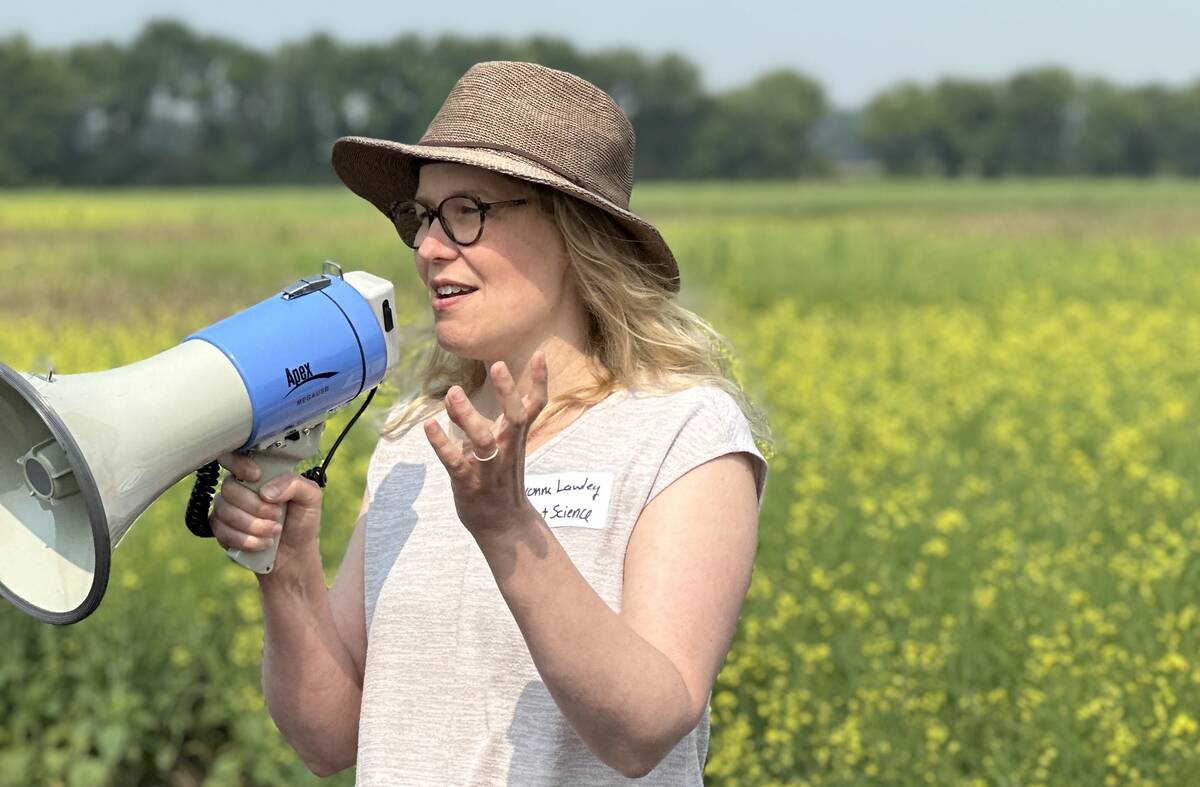It’s time to consider fungicide applications for winter wheat crops.
Persistent rains, warm temperatures and late emergence are conspiring to create pretty much ideal conditions for the fusarium head blight pathogen to thrive, according to David Kaminski, field crops pathologist with Manitoba Agriculture.
“Most of the time, as a crop, [winter wheat] escapes infection because it’s flowering or heading during the part of the season when it’s traditionally cooler,” he said “But this year, it looks like things might be lining up for conditions that are conducive to infection.”
Read Also

Cereal cover crops show mixed flea beetle protection for canola
University of Manitoba researchers are testing if planting fall rye and oat nurse crops help growers reduce damage without hurting yield.
Last week, Manitoba Agriculture Resource Development began producing their daily fusarium risk maps, which are produced from the beginning of winter wheat flowering until the end of the flowering period for spring wheat. Fusarium grows best in temperatures ranging from 15 C to 30 C and humidity levels of more than 85 per cent.

“If it gets hotter than that, the risk is very low. When it drops lower than that, especially as low as 10 C at night, there really is no chance of infection,” Kaminski said. “One cooler day can affect the amount of time that there’s this unique coincidence of heat and humidity that leads to disease.”
To capture that, the fusarium risk map is derived from a model that looks at hours during the day where the temperature is between 15 C and 30 C over the seven days prior to flowering, as well as the duration, in hours, of measurable rainfall over those same seven days.
“The crop is susceptible from the time that the head has cleared the boot until all the anthers are showing. And that can be lengthened or compressed depending on the amount of heat we’re getting. The hotter it is, the shorter the window,” Kaminski said. “We should also think about the amount of tillering in the crop. We generally want to protect with fungicides the primary head and that first tiller.”
In the last week of June, the winter wheat heads were just started to come out in many areas of the province, and it’s probably time that farmers start thinking about making the decision of whether to apply a fungicide.
The timing window for applying fungicides is narrow. The treatments must be applied between the time that the heads emerge and the flowers or anthers appear.
“Once flowering has occurred, the developing ovules are generally no longer susceptible to the fungus, even though spores are blowing around in the neighbourhood,” notes Kaminski.
At June 29’s Crop Talk Webinar, Moderator Lionel Kaskiw noted that we’re approaching that window quickly.
“At this point, we’re not very far from the crop flowering,” he said. “Some of the early heads might be flowering already, and we did get some heat, so the flowering time period would be short,” he said. “So if you’ve got a winter wheat crop that’s starting to head out, the decision to spray for fusarium is something that should be on your mind,” said Kaskiw.
Kaskiw pointed out that the weather conditions continue to lend themselves to high risk conditions for fusarium with rain and daily highs in the mid-20s in the forecast. He also suggested keeping an eye on the Fusarium Risk Maps.
“We see prime conditions for fusarium, so, keep this in mind when you’re going out to assess your winter wheat and make sure that you get the timing right. It’s probably the critical time to get the fungicide on.”
The fusarium risk map is available online at the Manitoba Agriculture website.
















